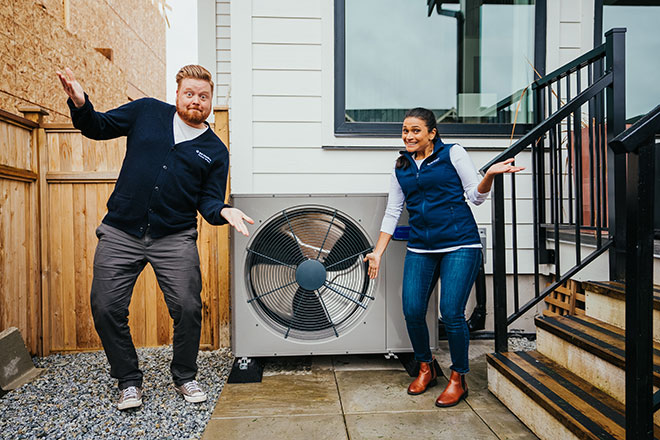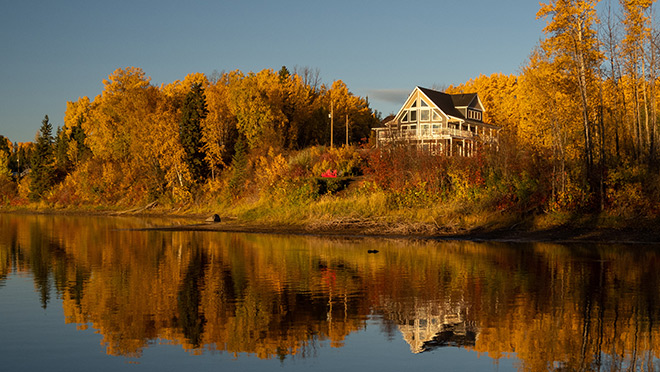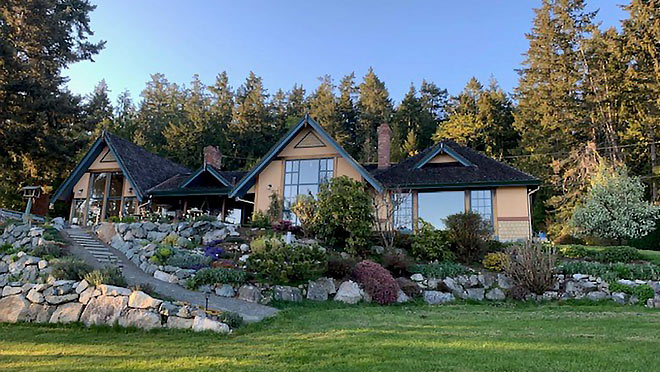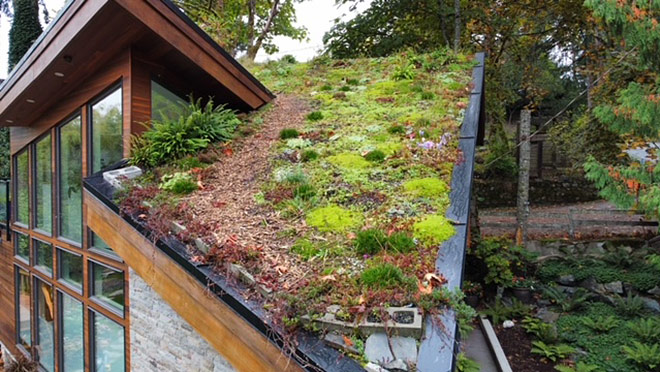Five things about heat pumps, plus PNE ticket giveaway

Tuscan-inspired dream home in Langley is big, but climate friendly
We're a little pumped about this year's PNE Prize Home, which features not just an electric vehicle charger, but a central ducted heat pump as well.
It's a very big home at 3,408 square feet, but it's designed to carry a small energy footprint.
It's not the first PNE Prize Home to include a heat pump, but it is the first with an EV charger and solar panels, and the first with a downstairs "mortgage helper" suite. So we're celebrating a little by giving away a four-pack of PNE Fair gate and ride passes on Instagram, and another 4-pack on Facebook.
Do you have questions about heat pumps? We've put together two videos to help you better understand the two most popular types of electric heat pumps in B.C.: central ducted, and mini-split.
Five things about central ducted heat pumps
This year's PNE Prize Home features a central ducted heat pump that is often a better fit for larger homes. Here are five things to know.
1. They're great for homes with existing ducts, or for new builds
If you already have a furnace in your home, chances are a central ducted heat pump will be able to use the existing duct system. And it's easy to build in room-to-room ducting in new homes.
2. The interior heat pump is housed in the basement or in a utility closet
Just like a gas or electric furnace, the interior unit of a heat pump is hidden in the home. Vents in each room are in the floor or near the floor, just like the vents that are part of a gas furnace heating system.
3. System offers better circulation and air quality
With vents throughout the home, a central ducted heat pump eliminates hot and cold spots in the home. And with no combustion involved in the process, air quality is improved over homes heated by gas, oil, and propane systems.
4. They're better for the environment
Opting for a central ducted heat pump powered by our clean and renewable electricity over a gas furnace adds up to a dramatic reduction in CO2 emissions. For many homes, the CO2 savings are as much as two tonnes a year, or around the same amount produced by a gas-powered vehicle driving from Vancouver to Toronto and back.
5. It's important to use a licensed contractor with specific training
A licensed contractor who has training and experience in properly sizing and installing a heat pump system is vital. That way you'll get a heat pump that's the most energy- and cost-efficient for your home.
As of July 1, 2022, you’ll need to hire a Home Performance Contractor Network (HPCN) member for your heat pump installation to be eligible for heat pump rebates.
Five things about mini-split heat pumps
Mini-split heat pumps use an outdoor unit to gather heat from the air and transfers it via refrigerant lines to one or more heads mounted inside, offering multi-zone heating or cooling. And in hot weather, they act in reverse to extract warm air from your home. Here's what you need to know.
1. They don't require ducts
Mini-split heat pumps are simpler for a licensed contractor to install than a central ducted heat pump. One or more vents are added inside the home to offer cooling or heating.
2. They're three times as efficient as baseboard heaters
Like central ducted heat pumps, mini-split systems are far more efficient than both gas furnaces and even electric baseboards, because they don't have to work to create heat. They extract heat from outside air and move it, and outside air contains heat even in sub-zero temperatures. For every unit of energy that goes in, a heat pump produces three units of energy out.
3. They can be single zone or multi-zone
If you have a smaller home and/or one with an open layout, a mini-split system may need to use just one indoor unit/vent to heat and cool your home effectively. Multi-split systems use two or more indoor units, or vents, attached to one outdoor unit, to ensure comfort in larger or multi-level homes. Each indoor unit, known as a 'head', works independently to provide custom temperature levels for different parts of the home.
4. They're a great option for many types of homes
Mini-split systems can be installed as part of a newly built home, and they're a popular option for older homes. Typically, they're popular for homes with electric baseboard heating, as they don't require ducting. But they can also be an option for smaller homes heated by fossil fuel systems, like a natural gas furnace, in part because they also provide cooling.
5. Using an experienced, licensed contractor is vital
As is the case with central ducted systems, sizing and strategizing are key. Getting the right size heat pump, and locating indoor heads in the right areas, is important. There's also a chance that your contractor will recommend an insulation upgrade in an older home before installing a heat pump, as a smaller, less expensive unit can be used in a better insulated home.
As of July 1, 2022, you’ll need to hire a Home Performance Contractor Network (HPCN) member for your heat pump installation to be eligible for heat pump rebates.
Take advantage of heat pump and EV incentives
In case you missed it, we have rebates of up to $7,000 for replacing a baseboard or other electric heating system with heat pumps, and rebates of up to $11,000 – when combined with the federal rebate – for making the switch from gas heat to a qualifying heat pump that delivers year-round comfort.
British Columbians can also take advantage of electric vehicle rebates, including up to $8,000 on the purchase of a new EV, and rebates for the purchase and installation of home chargers.
Related:


